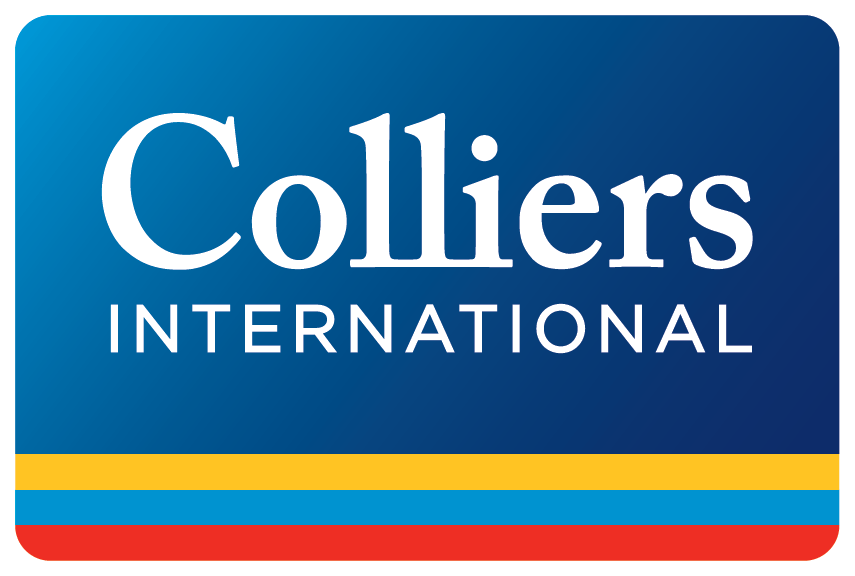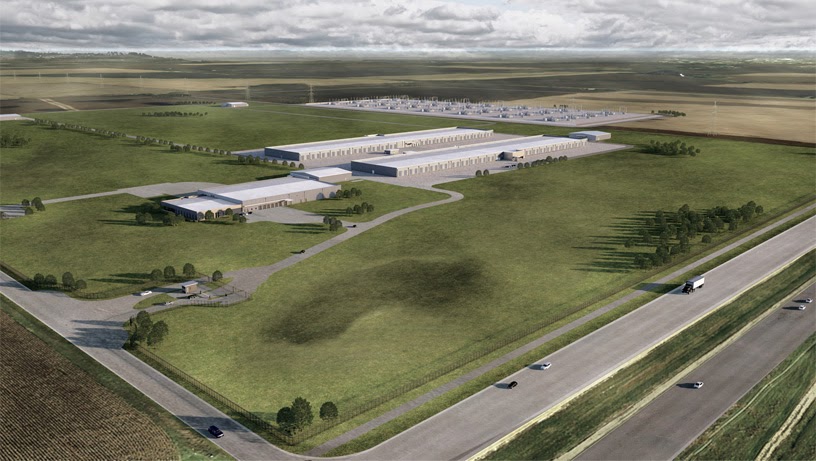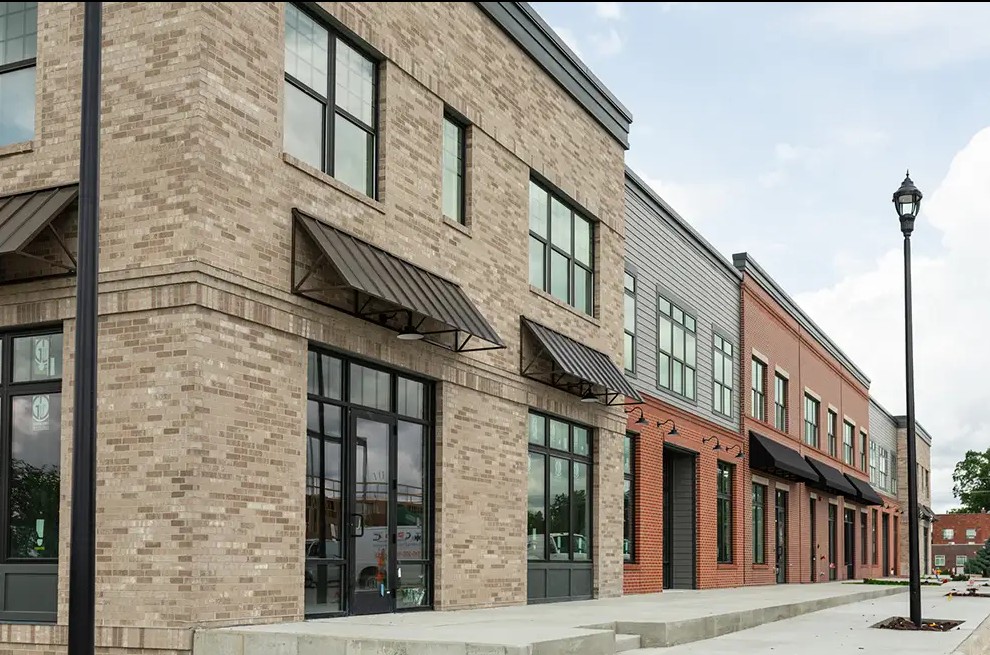Office Roundtable Q&A – 2018 Annual Real Estate Magazine
From rehabs to new construction, the contemporary office is about the ‘fight for workers

KENT DARR Apr 24, 2018 | 5:49 pm
19 min read time
4,633 wordsBusiness Record Insider, Real Estate and DevelopmentExpect more of the same in the office market this year. Companies will move into fancy new buildings, while other businesses will focus on “refreshing in place” or sprucing up and relocating to recently emptied spaces.
Costs continue to rise, construction workers are still in short supply. That means some projects get delayed, but they probably will not be abandoned. Greater Des Moines employers are battling for workers, and those workers are expecting a lot — healthy food choices, bright spaces, room to move, maybe a happy hour or some game time.
Our panelists were Chris Curran of R&R Real Estate Advisors, Justin Lossner of JLL and Jennifer Mertz, an interior designer with DLR Group.
They made up an optimistic crew. They noted the experiential features employees now expect. There’s also been a trend of making workplaces as useful and as flexible as possible. It’s not impossible to imagine a warehouse turning into office space. Some longstanding employers may just need to modernize their spaces.
“No. 1, just making sure cosmetically that they’re staying fresh and new and looking good. You know, sometimes there’s only so much you can do,” said Curran.
Watch the roundtable video in its entirety here. Watch the other four videos at businessrecord.com/arem.
What do you see as the major trend in the office sector in 2018?
Justin Lossner Personally, I think 2018 will be a lot of continued trends maybe more than anything. We’ve just seen a flood of office users moving to open, collaborative, huddle-type space. All the catchphrases that I’m sure we’ll talk about today. I don’t know that that dynamically changes next year. What could change is there have been so many major users make this transformation that you may not see as many of them, but it might hit kind of that middle-of-the-pack group that probably is going to look closer at staying in place and doing some sort of renewal refresh, as opposed to the big shifting out of, you know, 60,000 to 100,000 (square feet), start from fresh and go vertical. I really think we’ll see a lot more of that renewal-in-place strategy in 2018.
Jennifer Mertz I agree as well. It seems like having the open concept is definitely still viable and is going forward. Just having more flex spaces within the environment itself. So the huddle rooms, the nooks. Having more spaces for people to go to, especially for technology, since technology has been so diverse that people can actually work from just about anywhere. So offices can be anywhere. And more employees are actually providing more spaces, collaborative but also the heads-down-type approach for those areas.
Chris Curran I guess I see just continued optimism throughout the market. Companies looking to reinvest in their business, and as to Jennifer and Justin’s point, reinvest in their spaces. Quality, more modern touches, amenities. Again, just continuing to fight for, you know, the employee. And the economy’s great. Unemployment is very low, so there’s a lot of competitiveness out there. So there’s really that retain-attract-recruit mentality going on. You’ve got to have your office space being technology-sound and just looking good to be able to attract those employees. So I think there’s a lot of reinvestment. Everything from furniture to finishes to just kind of that new collaborative area. So I see a lot of continued trends from that regard.
And we’re really not talking about, in some regards, offices in traditional office buildings, right? There are some pretty unique users or uses of flex space, warehouse buildings that function as offices. What’s the advantage of that type of space?
Curran I think really with Hy-Vee, I think they call it their Helpful Smiles Group, their technology and marketing group, they have certainly started that trend up in Grimes. They took a very large (warehouse) and put a lot of money into it to create just an amazing environment that’s got amenities that you would see at an apartment complex or a home, everything from gyms, fitness, basketball courts, food, coffee, game rooms, TVs, a running track around the facility. So I think the advantage is to maybe create that environment to again recruit employees into a unique facility where they can take advantage of all those things and yet still maintain a lower cost, because obviously that type of space, rents are quite a bit less.
What do they do with the 32-foot warehouse ceilings?
Curran They do drop some clouds or some ceilings in some places to not just keep that open expanse.
Mertz And the acoustical value of it, just to make sure that there’s still those quiet spaces so that they can continue to work. But also the well-being for the employees; that’s how they’re retaining them. So, nourishment areas. They might have fresh fruit, vegetables or salads that they can partake in every day that the employer is providing to them. But also, you know, like you said, running tracks, you know. Or areas that they can go to and have a quiet time or they just need to make a personal phone call, a phone booth almost. So it’s really understanding that home environment but yet becoming more commercial and having the employee feel comfortable.
Lossner It’s interesting, too, to look at as you talk about suburban options versus downtown options. You know, Holmes Murphy, every single thing that you said was critical and they’ve built a beautiful precast building, two floors, that has the fitness, has access to trails, all of the perks that you’re talking about. Downtown is a little bit different. I mean, I think Arag was a really cool example of somebody taking what was a theater at one point to a school to now this open, collaborative workspace. What they didn’t do is they didn’t put running tracks in there, they didn’t necessarily do fitness because they’re across the street from the Y. So when we work with tenant rep prospects, that locational preference really kind of drives what’s in the space versus what’s outside the space. So it was really unique to see the industrial conversion capture all of that in this huge box at a price point that’s set lower, but they’re able to put all that stuff into it because of that price difference.
Mertz And I think Holmes Murphy being out in Waukee, there’s not very many amenities right now out there. So being in downtown Des Moines leads to more of going out to Gray’s Lake and being able to walk those trails a little bit easier than being out in Waukee right now. But Waukee I think is going be a place to really look for. Holmes Murphy was a great addition for that area.
Lossner Before Holmes Murphy made their announcement, one in five prospects would look that far west, and now I’d say most of our major tenant reps, especially the folks who are going to look at, you know, the bigger blocks of space that can really be an additional anchor, they’re definitely looking at Kettlestone at this point. In addition to West Des Moines and in addition to the downtown metro.
You mentioned Arag. Did it take a lot of convincing to have the folks at Arag look at basically a parking ramp with a little bit of office, well, a school space really, and say, “You know, you can really turn this into your home.”
Lossner I credit the Arag leadership team. Before we even got involved they had hired a group to come in and survey all of the staff to find out what items were important to them. But as they started to really kind of uncover more and more important issues to their staff, they really decided we have to step back and do our due diligence and look at the entire market, even though in their mind I think they were really down a path of staying in place (at Capital Square). And an independent third party kind of kicked that off.
And then we got engaged. Our charge was show us everything. We toured R&R properties, we did tour Kettlestone, and I think in all there were 37-some options that they kind of narrowed down to a short list. And to the credit of the landlord, they brought in an architect, they brought in a designer, they had 3-D renderings. When you stood in the space, it hadn’t been demoed at that point, so it was brutal. I mean, it was really tough to visualize. But through the architectural team, they were really able to kind of paint this picture that everyone looked at and said, “I get that. That could be really cool.”
Are there more locations in the Des Moines area, in the downtown area, that would fit that mold where you wouldn’t necessarily look at it as a place that you could revamp in that way, but other opportunities?
Mertz Yeah, we’re on the Western Gateway edge. And you know, it was a car dealership or some type of automotive space. And taking that and, you know, taking the exposed beam ceilings and columns and really showcasing that. We also have a shaft that was the car elevator that actually raised cars going to the second floor for repair and storage, and we turned that into a conference room. And it still has all the parts and pieces under the shaft.
We do have conference rooms, but we also have other collaborative spaces and even though we still have an open office, we can go and be in whichever space we want to. So having that flexibility, plus being downtown, being right across from the park, the Gateway Park, and just seeing all the sculptures and … it’s a great vibe.
For a time there was a big pull to the suburbs. Then there was this kind of swing back to downtown. Does it feel like it’s at kind of an equilibrium, or is it swinging one way or the other?
Curran You know, I think there’s cases of both. We’ve seen companies make a big investment and come from west downtown. I think there’s still quite bit of interest from folks downtown going out west, so I would say there’s a good balance.
Mertz I’m seeing quite a bit of a mix, depending on what’s happening. I mean, it depends on the amenities that they are looking for. Space downtown is a little bit harder to find, so they have to choose where the best spot would be for them.
Is there a typical profile of a company that ends up looking at the suburbs versus downtown?
Lossner I was going to say tech, but then you look at Hy-Vee (with a tech office) in Grimes. I’ve been surprised by folks that have located downtown that to me fit more of a traditional West Des Moines profile. So I think that we’ve kind of shattered that profile and it’s, people are now really assessing all options, which I think is good.
Curran It’s almost like people who have been here, who have seen downtown kind of go through a transformation, and they’re sold, you know? They want to reinvest down here and stay down here. Same thing out west. I think you’re seeing that they’re out there, they appreciate a lot of those perks, amenities, you know, the parking access, whatever. And so they definitely tend to want to stay. I don’t know if the millennial thing has anything to do with it; there’s a lot of housing downtown, and maybe that is a driving force for a company that would stay downtown versus being west.
Mertz Well, and there’s so much housing just about anywhere now. So the chances for any of the millennials or the other people to move into those locations where needed, where they are located, where work is located, is much easier now.
Is there a move to sort of urbanize some of these suburban office parks? What goes into repositioning those spaces to make them attractive to a younger workforce?
Curran No. 1, just making sure cosmetically that they’re staying fresh and new and looking good. You know, sometimes there’s only so much you can do. But usually parking’s the big thing; in some of those older suburban buildings, you’ve got an advantage. So you’ve got parking but keeping the look of the building fresh and new and then just adding in a lot of these amenities that we’ve talked about. Everything from conference rooms to fitness to food; technology is huge. And so I think that’s where you’re seeing some of the transformation. I mean, I know you’ve got a project at Westridge that just went through some of that, added some conference rooms and fitness. You know, I think tenants are really, companies are really demanding that type of service and that type of amenity to offer their employee.
Mertz And adding daylighting is important as well. Having the space so everyone has an opportunity to see outside definitely is better for the well-being of that person.
Lossner I would add to that. I know R&R’s done a lot of it, is some of the buildings that are older, 20 to 30 years old, the ceilings were lower. So 8-and-a-half-foot ceilings were kind of the norm. But now, with the daylight and just having that high open ceiling is huge. And so some of the vacant spaces we’re just literally taking the ceiling out or look to just raise that up to bring in more light and just give it a more expansive feel.
Mertz And there are new things that you can put into the flex spaces that draw the sun in, so things like that that’ll bring the daylight down into those spaces that may not have a lot of windows. We’re even seeing it in not just offices but schools and other workplaces like automotive, where you can put in daylighting so that people don’t feel so closed in.
What is some low-hanging fruit that the front office could choose from if it was just trying to do a mini-refresh?
Mertz I would say one thing is just having a couple of the huddle rooms, which would be smaller conference rooms, maybe for two to three people. Or a phone room would be something pretty reasonable to do. Another thing that they could do is a sit-to-stand desk. That would be a big refresher to keep people going. People are always sitting at their desk. Why not stand and do it for
10 minutes at a time? Sit for the rest of the 50 minutes for an hour, and then, you know, you can get up and walk around.
Lossner I think people are spending just as much time figuring out furniture as they are the physical walls, and is it open versus not open ceiling concept. West Des Moines is a great example. I think Blue Compass did a refresh of the old Chez Battery space a few years ago. And they ripped the ceiling out and opened the ceiling with a cloud system. They actually focused more on what kind of furniture they would put in the space within it. You know, some sit-to-stand stuff, some flexible work environment, some huddle space that wasn’t hard-wall construction. It was all furniture pieces that they just programmed this large open space. And it turned out great. I mean, you know, it wasn’t a full, like you said, world-class architect design but it accomplished this really neat, new refresh concept.
Mertz I think there’s a lot of people riding their bikes a lot more to work. I think the opportunity is there and especially with our trail system in the area, it’s awesome to just be able to get on your bike and head downtown if you’re out in Waukee or Ankeny. And just having the amenities of, like, showers and the bathroom. It doesn’t have to be anything earth-shattering, like a five-star hotel. But it could be just a shower so that people can change, a locker room, maybe just cubbies that they use.
Are there some things that people are doing that are kind of top of mind in your world right now?
Mertz I think the wellness part, being able to come in after you’ve ridden your bike from downtown or from wherever; go for a run at lunch, being able to take a shower; have the flexibility within the office to move wherever they want to. Maybe it’s not, they don’t have a standard station, maybe it is a sit-to-stand station, but it’s a smaller one, more of like a hotel-type area. And nourishment areas I think are probably the biggest things. Just fresh fruit, apples, oranges, bananas on the counter. That’s a big thing for employees to have and know that they have the flexibility that they can, they don’t have to be eating chips or things like that.
Curran Food trucks are still a big thing. With Westfield, (R&R’s) new office building in West Des Moines, there’s going to be a segmented, dedicated area for food trucks, a food truck court. We’re certainly still seeing those within the parks. So the food truck, I think people love it. On nice days it’s a change of pace and something that they can go experience, you know, different food trucks here, there, that come, and it’s been working well for both sides. So it’s a good critical mass of people. They can centrally locate in one of the parks, and people are finding them, so it’s been working well. So it’s just a good alternative. It’s quick, it’s easy.
Lossner Are you guys (R&R) still programming coffee and restaurants and things like that within the building? I think that’s a really interesting trend that you guys are ahead of the curve on in putting some of that stuff that you’d naturally see in a downtown environment out west.
Curran Right, right. Westfield’s a big enough size where absolutely, we are trying to target coffee; a food user to be located within the building off the first-floor lobby. It’s very much like a downtown type of amenity.
Another big trend in amenity, too, is just those outdoor seating plaza patio type areas. That’s being incorporated into Westfield, and also something that R&R’s looking to do within their office parks.
What’s the cost of new construction just in general?
Lossner I think it depends on the material. I mean, just a gut-shot number that we’re seeing is anywhere between $200 and $225 per square foot, and that probably includes some level of landlord delivery. And then you get into the whole finishes side. So it’s definitely still a significant driver, but I would agree that it’s not just the shell that people are focused on, it’s how they’re programming that space within the shell. And so the furniture companies … are pushing design and, you know, a whole level of costs into a real estate decision that you absolutely have to factor into the overall project cost.
Mertz Absolutely. You would need to make sure that you have those costs in there; otherwise people just can’t, you know, the cost of the furniture alone can be pretty extreme, you know, depending on what their expectations are of moving in. And the other amenities that they want to go into that facility.
Curran Yeah, I think the other component too is still technology. Still a big, big chunk of the budget. You’re seeing security; security’s still a big thing for a lot of companies, large and small. The technology, whether it’s the high-speed connectivity, ample cabling, video conferencing, you know, TVs in conference rooms and elsewhere. And all those are connected, wired together, etc., so technology, the amenities, the construction itself, and the furniture, they are all big areas.
What about outside investment?
Lossner Yeah, more than ever. I mean, Capital Square, out-of-state investor. On our investment arm we’ve seen, actually most of the sales that we’ve participated in 2017 were out-of-state buyers. And that’s just purely from a pure investment, less occupier standpoint. But definitely a lot
of money from outside of Iowa is still looking at the state.
Is there a particular region of the country that that’s coming from, or internationally?
Lossner Not internationally for us. I haven’t seen that yet. But West Coast and East Coast for sure. Texas money, for whatever reason, there’s been quite a bit. California has been strong for the last 10 years, really, quietly strong and gaining. East Coast was the first time that I think last year I’d seen a couple groups come from that and Cap Square really kind of tested the market with that, with alternately being bought by a Colorado group.
One of the things that we heard at the Economic Forecast (luncheon) just recently was that companies had capital and they hadn’t necessarily been spending it. Couple that with the unemployment rate being so low, is that one of the places where we expect businesses to be investing is in their office space?
Lossner It’s interesting because there’s been so many of these people that have been in existing space for five, 10, 20, however many years, that they were probably overdue. I don’t know that there’s as many of those right now. There’s probably still a handful out there that are snooping around. So my personal thought, is that those major announcements of here comes another 130,000 square feet of new construction, and we’re gonna leave behind 100,000 square feet in Urbandale, are probably to be less this year. But now we’re going to deal with the 2016-2017 announcements that are hitting the market in the next 12 to 18 months.
In 2019, we’re going to know the full effect of tax reform. Do you anticipate more momentum in the market after that?
Curran Maybe. I think the things not to forget about are some of these even small, medium-sized groups. We talked a lot about the large users, and I agree that maybe there will be a little bit of a slowdown with some of those moving around. But I think there’s still a lot of great, great opportunity for some of these small, you know, even call it 25 employees and less, those people are feeling good. They’re feeling good about tax reform and the economy so they’re growing, and they’re looking to get into that next level of quality space. And so I think that’s a whole, you know, new wave. And there’s a lot of them, you know, in our market in Des Moines. There’s a lot of those small to midsized groups that hopefully can tend to bubble up and fill up some of that space and, you know, move into that, you know, move into that category from medium to big, or small to medium.
What about threats?
Curran No. 1 is just the high cost of construction. I think that’s still a threat and it just, you know, construction being so high. Whether it’s people wanting to build or reinvest or in their space, that to me, that could be a detriment. Well, it is a detriment and maybe keeps people from going ahead and doing that. Just makes deals harder to finalize and figure out with this high cost of construction, I would say.
The other thing, maybe, is, in this business, being in the office market, you need jobs, you need growth, and with unemployment being so low, I don’t know if that is going to potentially pull back, you know? With just the ability to find good help out there it certainly may. And you may see a little slowdown and people just hiring because they’re unable to find workers. It’s just there’s not enough people. … The unemployment rate is so, so low — that may be a threat.
The only other thing in our world with the office space is I think there still is that kind of work from home trend going on a little bit. I think some companies are maybe experiencing it and it’s not going so well. But some are certainly still wanting to experiment with it, and that’s going on. And technology’s making it easier and easier to do that, and some companies are going through the analysis and making the determination maybe it’s going to be cheaper to do it. Employees want to do it, you know, it’s attractive to them. So we’re seeing that work from home. And that just decreases that footprint, that square foot, that offices and companies need in their space. Even though they’re hiring, they don’t need any more space because people are working from home. So I can see that as being a challenge, a threat, too.
Mertz Do you find that in larger companies or smaller ones?
Curran Yeah, I think it’s mostly larger but it certainly can apply to both. I think it’s, you know, a lot of sales service organizations that people are working from wherever. … But most of the cases is the larger groups that are experimenting and use that method.
Lossner It’s been pretty interesting. I don’t know, I guess, on a mass local level, what you guys have seen, but JLL did a study a year ago or so and it basically talked about how while you have this work from home strategy you also have more collaborative space. So it’s almost like a few years ago it was, yeah, go work at Starbucks if you want to. And now it’s almost gone the other way, it feels like, where people are programming Starbucks into their space. So to me I feel like it’s rubber banding a little bit. And square footages maybe are still relatively stable because people are not working at Starbucks anymore, they’re working at their office Starbucks, which maybe is a glorified break room with fruit on the counter.
What have we missed today?
Mertz I think one thing, the change management, but we touched on it just briefly. I think more companies as they’re growing and diversifying into larger spaces or a different space, they need that help with making sure that they can, they’re making these changes. And also communicating to their employees what’s happening and what’s going on. I think it’s a big benefit to the companies and it makes it much easier for them to understand these changes because we have such a diverse age group, going from millennials to baby boomers, that you know, the baby boomers are kind of resisting this change of going to open spaces and just having the huddle rooms and small conference rooms, that it’s good for them to understand that these changes are good and that it will help with the collaboration.
Lossner I will say on some of the groups that have gone through occupancy planning and workplace strategy that have that wide range — and that’s a huge point — I have seen the baby boomer generation and kind of that, I don’t know where I fit into this, but somewhere in the middle range, that have been in a private office at one point that are now in some sort of open collaborative area, have really embraced it far more than I. That’s actually one of the bigger surprises. Maybe it’s the opposite, the younger workforce is probably just used to it or doesn’t know any different. But I think there’s been a real silver lining coming out of that generation that’s older than 35 or 30, or whatever years old it is, that have actually really embraced that. And that’s been kind of cool to see. n








